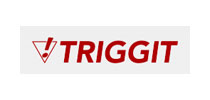 Triggit announced today that is has raised $4.2 million in Series A financing led by Foundry Group and Spark Capital. Read the release.
Triggit announced today that is has raised $4.2 million in Series A financing led by Foundry Group and Spark Capital. Read the release.
Triggit CEO Zach Coelius discussed the new funding and his company’s plans.
AdExchanger.com: Please share the details on your latest round of funding.
ZC: Santo Politi from Spark Capital and Seth Levine from Foundry Group approached us this spring about a potential investment and the round came together very quickly. We were impressed with their knowledge of the space and how similar their views about RTB were to ours. From there coming to terms was easy and we accepted an investment their firms. Also participating in the round through the conversion of their previous investments were Brett and Scott Crosby, the founders of Urchin; Asher Waldfogel, the founder of Peakstream and Tollbridge Technologies; Ben Narison, founder of Fashionmall.com; Joe Spieser and Alex Zhardanovsky, founders of Epic Advertising; Gilad Elbaz, the founder of Applied Sematics; Reid Hoffman, the founder of Linkedin; TriplePoint Capital; DG Incubation; Joi Ito; Charles Sprincin; and Eric Stein. Our plan is to use the proceeds of the round to continue building the Triggit team and to begin international expansion.
What was your central thesis to investors on why they should invest in Triggit?
As a function of some of their other investments in the space around real time bidding and digital media, Spark and Foundry have unique insight into what is happening in the space and the actual capabilities of the various players. Their view and ours is that RTB and the underlying technologies will be the key differentiator in this market and that Triggit’s early bet on RTB technology provides a significant advantage. Seth and Santo believe that RTB has proven that it will become the standard by which all digital media is transacted and there is significant value in building a robust platform for marketers to buy using RTB. Since Triggit was the first pure play RTB platform the technology we have developed over the last year and a half was apparently attractive.
Beyond display, where do you see the next digital channel emerging for audience driven marketing? Why?
We are starting to work on RTB for video. I think it is pretty clear that video is next. The reasons are mostly technical. Adapt.tv and others are already rolling out RTB for video and the requirements for us to integrate video are straightforward. We are hoping to have it in place sometime this summer.
What types of clients are taking advantage of Triggit services today? Any verticals, tactics, etc. that you can identify?
We work with clients of all shapes and sizes who wish to take advantage of RTB to run campaigns with full transparency and control while utilizing data to drive superior performance and targeting. Our clients included Fortune 500 companies, agencies, and tiny local merchants. The great thing about all the hard work that we put into technology over the last year and a half is that our system is scalable and can easily support clients of all sizes.
When evaluating a vendor which provides real-time bidding capabilities across exchanges and other supply sources, what is the one key question they should ask as it relates to RTB?
This question goes back to the conversation we had on Ad Exchanger this winter about what defines a DSP. I still stand by the comments I made then and think that they still serve as a useful way to think about the space.
We have sadly entered a period in the DSP marketplace where there are many firms claiming to have RTB technologies when they actually don’t, or their technology is immature and able to execute only a few thousand impressions a second (QPS). I think the best way to sort through the vaporware and evaluate a DSP is to run a test. Be wary of any DSP that requires a minimum spend or has a contractual obligation for the test. That is usually the sign of a young business that wants to use your marketing dollars for learning. If a DSP performs well it should want to demonstrate their capabilities to prospective clients as simply and easily as possible and a test campaign can be conducted using RTB for as little as a few thousand dollars.
By John Ebbert









